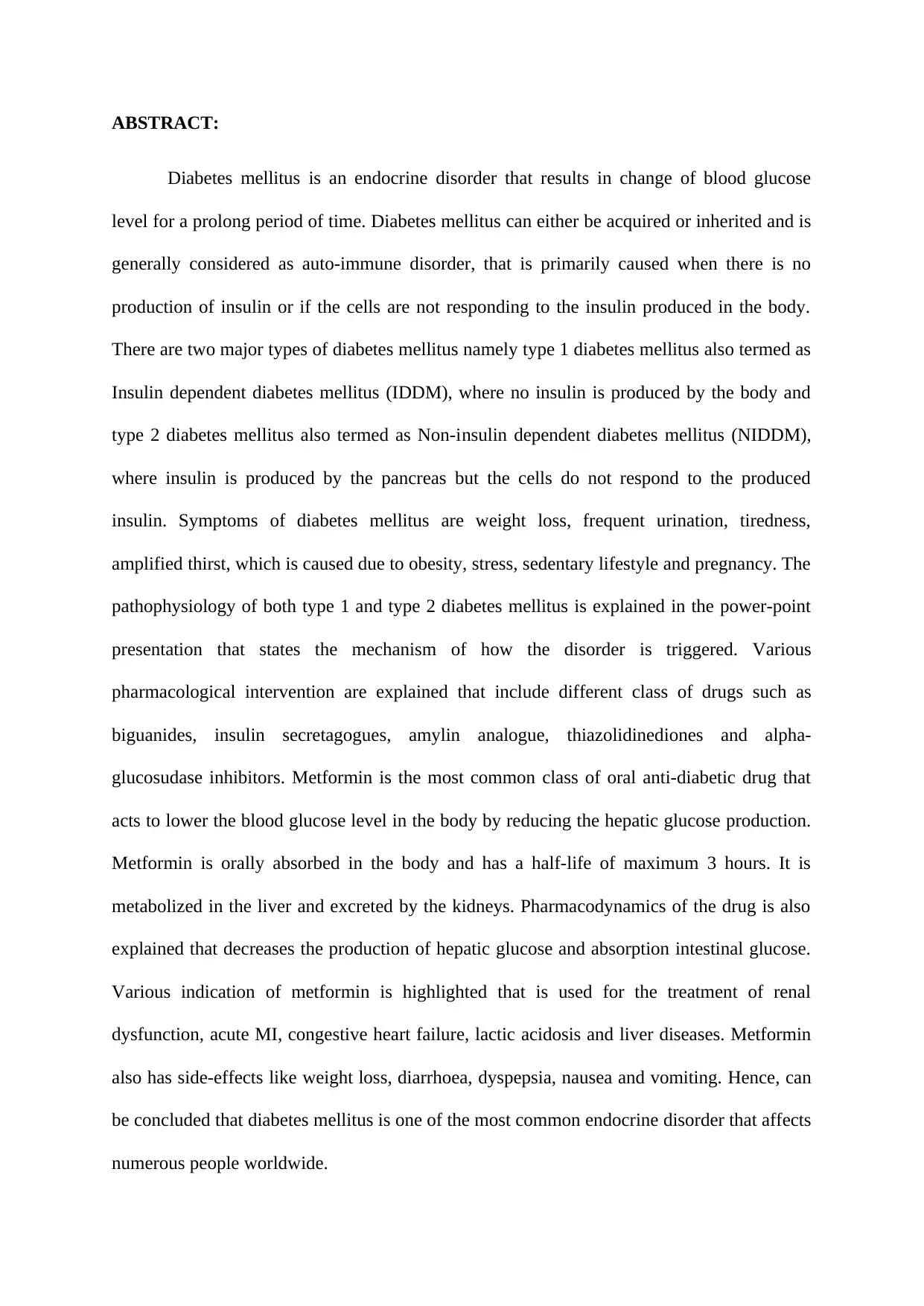NSC2500: Diabetes Mellitus Presentation & Pharmacology - StudyDesk
VerifiedAdded on 2022/11/29
|2
|357
|22
Presentation
AI Summary
This assignment is a presentation and abstract that focuses on Diabetes Mellitus, exploring its pathophysiology and the pharmacological interventions used to manage the condition. The presentation delves into the mechanisms of Type 1 and Type 2 diabetes, highlighting the role of insulin and the body's response. It examines various drug therapies, including biguanides like Metformin, insulin secretagogues, and others, detailing their modes of action, indications, contraindications, and potential adverse effects. Metformin, a common oral anti-diabetic drug, is discussed in detail, covering its effects on blood glucose levels, metabolism, and associated side effects. The presentation aims to provide a comprehensive understanding of the disease and its pharmacological management, including the importance of these treatments in managing the disease and improving the patient outcomes.
1 out of 2








![[object Object]](/_next/static/media/star-bottom.7253800d.svg)